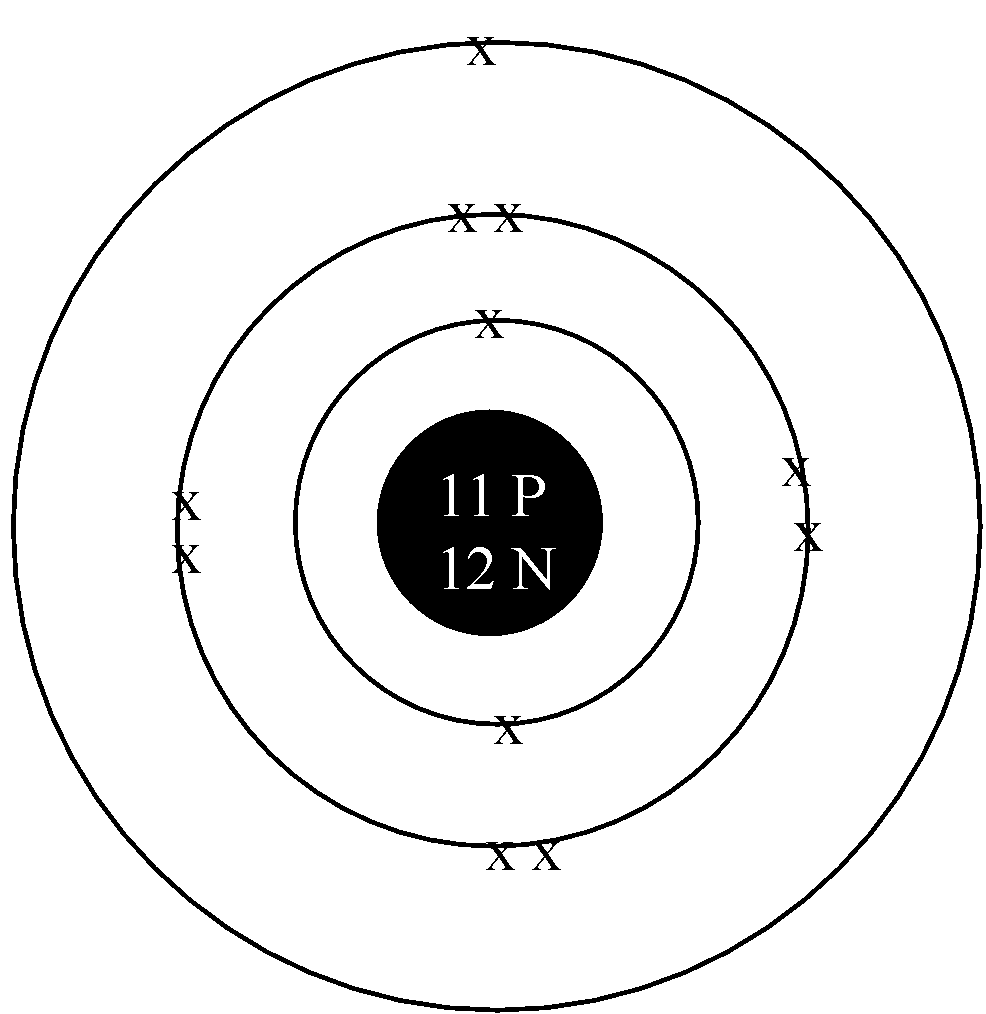
How can I make a sodium atom model?
Answer
552k+ views
Hint: Find the number of electrons in the atom and there are various shells in the atoms which are denoted by K, L, M, N, etc. So, according to the number of electrons in the atoms are arranged in the shells. These shells are drawn as rings and in the center write the number of protons and neutrons.
Complete answer:
To make a model of the atom, first, find the atomic number of the atom. So, we have to make the model of a sodium atom and its atomic number is 11. This means that there are 11 electrons in the sodium atom. We know that the number of protons is equal to the number of electrons in the neutral atom so, the number of protons will be also 11.
There are various shells in the atoms which are denoted by K, L, M, N, etc. So, according to the number of electrons in the atoms are arranged in the shells. Each shell has a specific capacity for keeping the electrons. In the K shell there can be only 2 electrons, in the L shell there can be only 8 electrons, in the M shell there can be only 18 electrons, and so on.
So, in sodium atom there are 11 electrons, they will arrange as:
$K=2,L=8,M=1$
Its configuration will be:
$1{{s}^{2}}2{{s}^{2}}2{{p}^{6}}3{{s}^{1}}$
Therefore, the K shell will have 2 electrons, L shell will have 8 electrons, and M shell will have one electron.
We know that the mass number of sodium atom is 23, so its number of neutrons will be:
$23-11=12$
By combining all the information the model is given below:

Note:
The shell K represents 1, the shell L represents 2, the shell M represents 3, the shell N represents 4. Each shell has specific sub-shells which are s, p, d, f, etc. That is why each shell can have only a specific number of electrons.
Complete answer:
To make a model of the atom, first, find the atomic number of the atom. So, we have to make the model of a sodium atom and its atomic number is 11. This means that there are 11 electrons in the sodium atom. We know that the number of protons is equal to the number of electrons in the neutral atom so, the number of protons will be also 11.
There are various shells in the atoms which are denoted by K, L, M, N, etc. So, according to the number of electrons in the atoms are arranged in the shells. Each shell has a specific capacity for keeping the electrons. In the K shell there can be only 2 electrons, in the L shell there can be only 8 electrons, in the M shell there can be only 18 electrons, and so on.
So, in sodium atom there are 11 electrons, they will arrange as:
$K=2,L=8,M=1$
Its configuration will be:
$1{{s}^{2}}2{{s}^{2}}2{{p}^{6}}3{{s}^{1}}$
Therefore, the K shell will have 2 electrons, L shell will have 8 electrons, and M shell will have one electron.
We know that the mass number of sodium atom is 23, so its number of neutrons will be:
$23-11=12$
By combining all the information the model is given below:

Note:
The shell K represents 1, the shell L represents 2, the shell M represents 3, the shell N represents 4. Each shell has specific sub-shells which are s, p, d, f, etc. That is why each shell can have only a specific number of electrons.
Recently Updated Pages
Master Class 11 Economics: Engaging Questions & Answers for Success

Master Class 11 English: Engaging Questions & Answers for Success

Master Class 11 Social Science: Engaging Questions & Answers for Success

Master Class 11 Biology: Engaging Questions & Answers for Success

Class 11 Question and Answer - Your Ultimate Solutions Guide

Master Class 11 Business Studies: Engaging Questions & Answers for Success

Trending doubts
10 examples of friction in our daily life

One Metric ton is equal to kg A 10000 B 1000 C 100 class 11 physics CBSE

Difference Between Prokaryotic Cells and Eukaryotic Cells

1 Quintal is equal to a 110 kg b 10 kg c 100kg d 1000 class 11 physics CBSE

Explain zero factorial class 11 maths CBSE

What is a periderm How does periderm formation take class 11 biology CBSE




